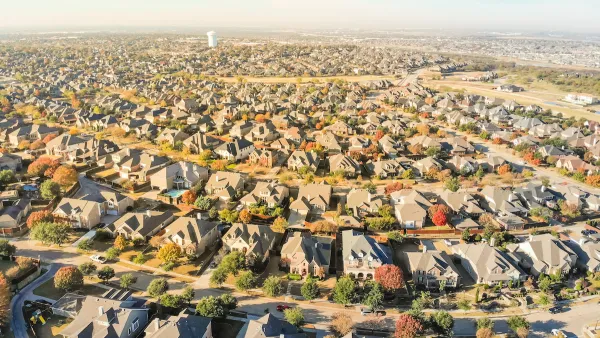What does it mean for cities and civic life when neighborhoods are viewed as products geared for individual consumption rather than ever-evolving communities?

“In August, the Vancouver Sun reported that a group of Douglas Park neighbors succeeded in convincing the city to reject a zoning variance application which would have allowed the expansion of a business near their homes. They felt this expansion threatened the tranquility and quality of life of their neighborhood,” writes Daniel Herriges in Strong Towns.
The offensive business in question? A new day care for up to eight children planned for the same building as an existing day care. Herriges doesn’t find this surprising, but writes that “the ordinariness nowadays of stories like this, in which residents of a place use legal and regulatory processes to aggressively litigate seemingly small-potatoes issues, does say something about today’s cities.”
Herriges refers to home-based businesses, reminding the reader that, for most of history, they were largely the norm. But as the pitch for suburban developments began relying on ‘peace and quiet’ as a premium amenity, “We’ve undergone a major cultural shift in the age of the Suburban Experiment toward ‘privacy and exclusivity’ as a dominant expectation of what one’s home should offer, even in cities.”
Not that quiet isn’t good, Herriges adds. But “What was different in the past was that you lived much of life within your neighborhood, so you acutely felt the trade-off between the advantages and disadvantages of living in a complete community.” In other words, “a certain amount of chaos and disruption in your environment was tolerable because the benefits were obvious.”
For Herriges, the proliferation of private cars changed this equation, making it easier for people to travel long distances and thus making them more willing to sacrifice nearby amenities for larger houses and yards. Yet the neighborhood in Vancouver where the day care would be located isn’t a suburb. It’s a highly walkable, urban neighborhood.
Herriges concludes, “I fear that the biggest obstacle to building stronger towns and neighborhoods, today, is a dominant culture that says that your neighborhood is no longer a project in community-building in which you are engaged alongside your neighbors.”
FULL STORY: Ixnay on the Ay-play

Analysis: Cybertruck Fatality Rate Far Exceeds That of Ford Pinto
The Tesla Cybertruck was recalled seven times last year.

National Parks Layoffs Will Cause Communities to Lose Billions
Thousands of essential park workers were laid off this week, just before the busy spring break season.

Retro-silient?: America’s First “Eco-burb,” The Woodlands Turns 50
A master-planned community north of Houston offers lessons on green infrastructure and resilient design, but falls short of its founder’s lofty affordability and walkability goals.

Test News Post 1
This is a summary

Analysis: Cybertruck Fatality Rate Far Exceeds That of Ford Pinto
The Tesla Cybertruck was recalled seven times last year.

Test News Headline 46
Test for the image on the front page.
Urban Design for Planners 1: Software Tools
This six-course series explores essential urban design concepts using open source software and equips planners with the tools they need to participate fully in the urban design process.
Planning for Universal Design
Learn the tools for implementing Universal Design in planning regulations.
EMC Planning Group, Inc.
Planetizen
Planetizen
Mpact (formerly Rail~Volution)
Great Falls Development Authority, Inc.
HUDs Office of Policy Development and Research
NYU Wagner Graduate School of Public Service




























